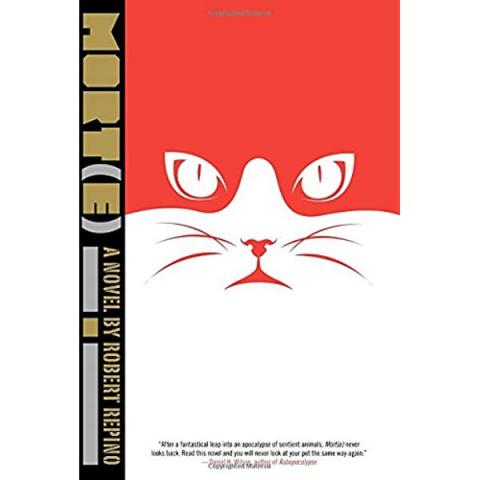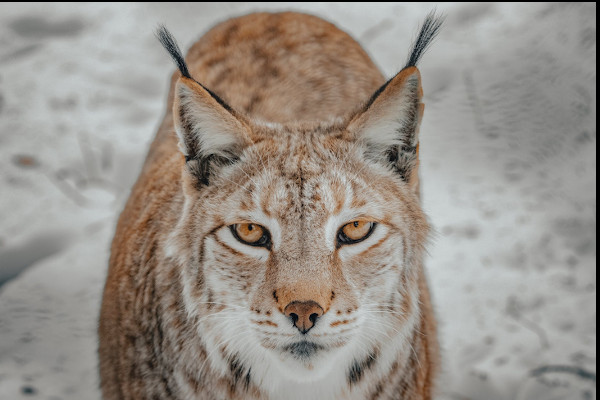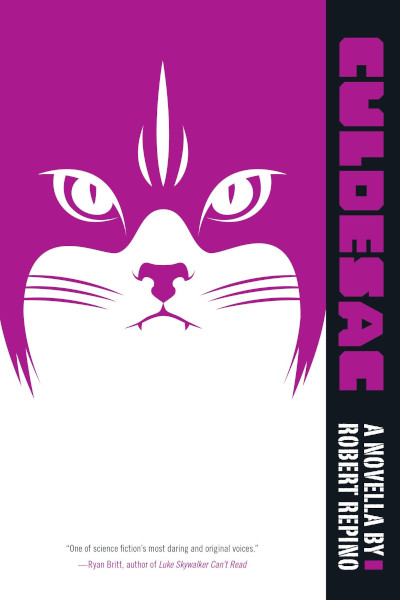Love, Friendship Are Forged Amidst Conflict in ‘War With No Name’

What happens when Redwall, Animal Farm, and The Stand bump into one another on a darkened street, spilling their grocery bags and mixing their contents? I'm not 100 percent sure, but a sure bet is that it would look a lot like Robert Repino's The War With No Name series. Love and friendship are set in stark relief against the backdrop of a conflict that in some ways, like the increase in pets' stress throughout quarantine, we may have some suggestions in our own time.
The series' first installment, Mort(e), establishes several constant features that will remain relevant through the rest of the series. First: the friendship between a cat, Sebastian, and his neighbor, a dog named Sheba. The second thing established is the presence of a biological agent that transforms all of the pets and many farm animals into more aware, more sentient – more human – beings. The genesis is a hormone spread to the animals granting them this uprated consciousness unleashed by a colony of giant ants led by a sentient queen. It may seem hard to swallow, because we all like to believe our pets – and our friends' pets – love us very much, but many are convinced, in the War With No Name that they are slaves and the humans must be subdued or eliminated.
What follows, however, after this unbelievable premise, is an eminently believable tale of love and friendship. Sebastian, the former house cat, seeks out his pre-transformation friend, Sheba. The transformation, in a way, strikes the suspicious reader as a sort of stand-in for a change in other types of consciousness.

Could it be a class-consciousness or a sort of national or tribal related consciousness? What to make of this perhaps even worries the animals as they take umbrage with the prospect that they are becoming like the humans were. Even with the apocalyptic scale conflict and change, Sebastian searches for Sheba, from whom he was separated just before the conflict comes to his corner of the world. It has a sort of allegorical feel of attempting to recover the relationships that matter most after a large-scale crisis, of the need for our role in conflicts to be worth fighting for on a deeper level.
There's more to the war, though, than just Sebastian and Sheba. Between installments, chronologically, is a novella about Culdesac, Sebastian's commanding officer during the war. His growth is one from a wild animal, a bobcat, to a leader of mostly former domesticated animals. Culdesac is predominately a war story, and a rather good one, about a commander's attempt to discover more than force and cunning in combat.
The final installment of the series that is on the shelf, D'Arc, resumes Sebastian and Sheba’s story, just after Mort(e) has come to its dramatic end. The friends are pressed into service once more, for a more developed society that has resurfaced after the close of the main events of the War With No Name. Our friend, Sebastian, at this stage, would like to be left alone, but trouble finds him – and Sheba, too.

As far as fantasy and science fiction series go, this one works wonders with its biological source material. It doesn't dwell on details to a pedantic level, giving little fodder to the internal kid in us all who can't bother to suspend belief for a few hours to partake in even relatively realistic fantasy or science fiction – our inner Mr. Gradgrind, I suppose.
Because it spends less time getting into the hardcore details, the reader is left with more important things to bother them, mainly the effects of a sudden cognitive boost for a large population, and just how disruptive this can be both on the individual and societal levels – even after humans are largely removed from the equation. Of course, this all comes wrapped in the eminently palatable packaging of a tale about a cat and a dog with enough violent action to keep even a mind melted by action movies on the topic at hand.
If you're looking for a series to get you through the fall, or the gaps between installments in your other series, The War With No Name has a promising amount of material at hand for the thoughtful and is a useful mirror to hold up to some struggles in our own world. With a new installment, Malefactor, out last month, it also has some fresh new stories that promise a conclusion.
Author Bio:
Adam Gravano is a contributing writer at Highbrow Magazine.
For Highbrow Magazine
Image Sources:
--David Selbert (Pexels, Creative Commons)
--Soho Press































































































































































































































































































































